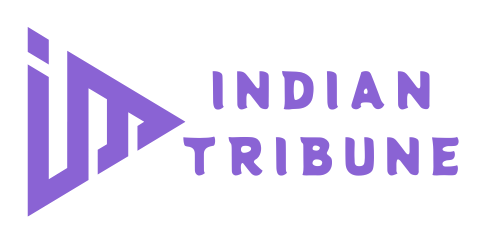In today’s fast-paced scientific environment, efficient laboratory management is crucial for ensuring accuracy, compliance, and productivity. Laboratory management software (LMS) has emerged as a game-changer, providing essential features that streamline lab operations. With the right laboratory software features, labs can automate mundane tasks, enhance collaboration, and maintain regulatory compliance, all of which contribute to more effective and reliable research outcomes.
What is Laboratory Management Software?
Laboratory management software encompasses a suite of tools designed to help labs manage their operations more effectively. It assists in everything from tracking samples and managing inventory to ensuring compliance with regulatory standards. By integrating lab operations software into daily activities, laboratories can significantly improve their workflow and efficiency.
Essential Features of Laboratory Management Software
When evaluating laboratory software features, it’s essential to consider those that will have the most significant impact on your lab’s operations. Here are some of the critical features that any effective LMS should include:
1. Sample Management
One of the primary functions of lab operations software is to manage samples efficiently. This includes tracking their lifecycle from collection to analysis and storage. Essential features include:
- Barcode Scanning: Quickly identify samples using barcodes, reducing the risk of human error.
- Chain of Custody Tracking: Maintain a comprehensive record of sample handling and movement.
- Storage Location Management: Know precisely where every sample is stored, improving retrieval times.
2. Inventory Management
Effective inventory management is crucial for lab operations. The right laboratory software features should include:
- Real-Time Tracking: Monitor the availability of reagents, supplies, and equipment.
- Automated Reordering: Set thresholds for inventory levels and automate reordering to prevent shortages.
- Expiration Date Management: Keep track of expiration dates for reagents to ensure optimal results.
3. Workflow Automation
Lab automation tools are designed to streamline workflows and reduce the time spent on repetitive tasks. Key features include:
- Task Scheduling: Automate routine tasks and ensure they are completed on time.
- Process Standardization: Implement standard operating procedures (SOPs) that can be easily followed by all lab personnel.
- Collaboration Tools: Facilitate communication and collaboration among team members, enhancing project efficiency.
4. Data Management and Reporting
Data management is at the heart of lab operations software. Essential features include:
- Centralized Data Repository: Store all experimental data in one location for easy access and sharing.
- Customizable Reporting: Generate reports tailored to your specific needs, whether for internal reviews or regulatory compliance.
- Data Integrity and Security: Ensure that data is securely stored and only accessible to authorized personnel.
5. Regulatory Compliance
Compliance with industry regulations is a must for any laboratory. Key features to look for include:
- Audit Trails: Maintain detailed logs of all activities to ensure accountability and transparency.
- Compliance Checklists: Automate the process of checking compliance with relevant regulations (e.g., GLP, GMP).
- Training Management: Track training and certifications for lab personnel to ensure they meet regulatory requirements.
6. User-Friendly Interface
A user-friendly interface is vital for adoption and everyday use. Key elements include:
- Intuitive Design: Ensure that users can navigate the software easily without extensive training.
- Mobile Access: Provide access to the software via mobile devices, allowing for flexibility in lab environments.
- Customizable Dashboards: Allow users to customize their dashboards to focus on the metrics that matter most to them.
7. Integration Capabilities
Finally, your laboratory software should seamlessly integrate with other systems and tools used in your lab. Essential features include:
- API Integration: Enable data exchange between different software systems, such as LIMS, ELN, and other lab equipment.
- Third-Party Tool Compatibility: Ensure compatibility with commonly used lab instruments and devices for streamlined operations.
The Future of Laboratory Management Software
As technology continues to evolve, laboratory management software is becoming increasingly sophisticated. “The future of lab operations lies in the integration of AI and machine learning,” says Dr. Emily Tran, a leading researcher in laboratory technology. “These advancements will help labs not only automate but also optimize their processes for greater efficiency.”
Conclusion
Choosing the right laboratory management software is a crucial step toward improving lab operations. By understanding and implementing these essential lab software features, laboratories can streamline their processes, enhance collaboration, and ensure compliance. health Investing in comprehensive lab operations software is not just about efficiency; it’s about fostering an environment where scientific innovation can thrive.
In summary, effective laboratory management software can transform the way labs operate, making it easier to manage samples, inventory, and compliance while enhancing overall productivity. As labs continue to navigate the challenges of modern science, embracing these essential features will pave the way for success.
Key Takeaways
- Sample Management: Optimize tracking and retrieval.
- Inventory Management: Automate reordering and monitor stock levels.
- Workflow Automation: Streamline tasks to improve efficiency.
- Data Management: Ensure data integrity and compliance with custom reporting.
- User-Friendly Interface: Enhance usability and accessibility.
- Integration Capabilities: Connect with existing tools for seamless operations.
By focusing on these features, labs can ensure they are equipped with the best laboratory software tools for success.



